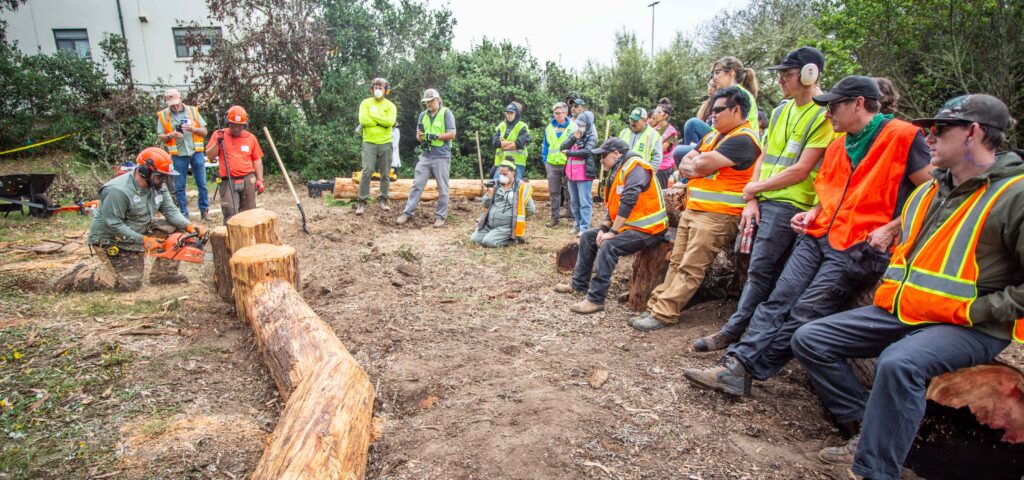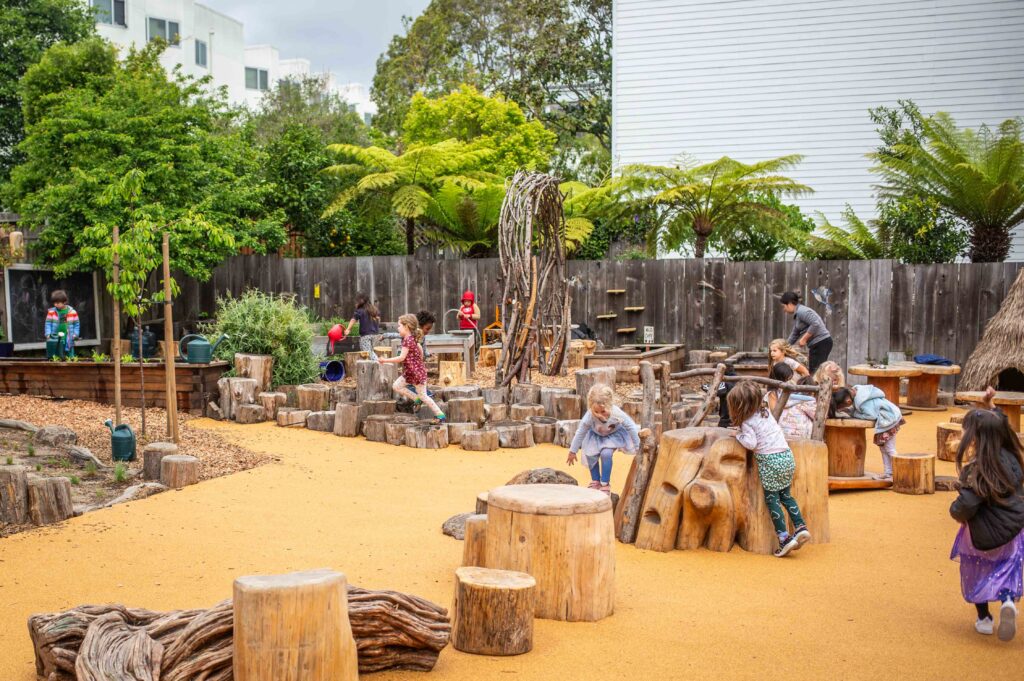Children and adults alike will profoundly benefit from time spent outdoors and in nature. Do whatever it takes to bring outdoor learning to schools.
—Annette Huddle, San Francisco Botanical Garden
Research shows that classes that are held outdoors are generally safer than indoor instruction and have lower risk of COVID-19 transmission for students and teachers. As schools across San Francisco and beyond plan for an eventual return to in-person instruction, many are considering how they will make use of outdoor spaces and nearby parks for learning.
The National COVID-19 Outdoor Learning Initiative is compiling a plethora of resources and guidance to help schools increase opportunities for learning outdoors. Check them out.
Based on their experience outdoors this summer, our SF educators also offer these:
10 Tips for Teaching Outside
Prep for outdoor learning | Make sure there are outdoor seating options that create space (stump circle, spaced chairs, yoga mats, etc.) and something to provide shade. Clipboards with a rubber band on the bottom keep paper from blowing.

Find motivators | At Alemany Farm Camp, food was a great motivator. Each day, campers either sampled something grown at the farm or used it in a recipe for lunch or a snack. Focusing on nutrition during a pandemic helped campers take positive action for their own health.

Offer varied experiences | Not all students respond to lessons in the same way. For some, hands-on experiences may be the best. Others may love to read books quietly or to work in groups. Mix up your activities so that students with different preferences will each get time focused on the things they like best. Doing so will help students stay engaged and pay attention.
Keep if fun! | Games and play can help everyone feel included, be active, and build valuable social and emotional skills. Having two to three back up activities kept the campers busy and active at Girls Sports camp.
Set high but attainable goals, then celebrate success | Educators can give students a bounty of motivation by rewarding group and individual success publicly. Mission Impossible Camp worked up to a 3 mile hike to Bernal Hill by first visiting parks that were close by. It was a big accomplishment for all.

Use team building projects focused on a shared goal | Alemany Farm Camp youth worked on improving the paths in the herb garden. Each day they looked forward to seeing how the area changed due to their combined efforts.
Minimize distractions | While you can control an indoor environment, there are many challenges and variables to running programming outdoors. Try and identify them, be flexible and prepared to adjust.
Change the scenery | The brain loves novelty and a new setting can be just what some students need to stay motivated to learn. Take a walking field trip or change location for different activities.
Maintain social distance | Enforcing social distancing is hard. Get creative. Wetlands Explorer Summer Camp developed hula hoop tag where kids tag each other with hula hoops rather than their hands. Guidry’s Early Care & Education Program encourages her kids to become airplanes when they get too close:
Spread your wings and get ready for takeoff!”
Dress for the weather | Always bring a jacket and water though in a pinch, exercise and movement will also keep them warm. 🙂

Contributors:
- Annette Huddle, San Francisco Botanical Garden
- Kathi Baxter, San Francisco Recreation & Parks
- Lydia Nichols-Russell, San Francisco Recreation & Parks
- Monique Guidry, Guidry’s Early Care & Education Program
- Rachelle Henley, San Francisco Recreation & Parks
- Sean Dries, YMCA of San Francisco.
MORE NEWS

Nailed It! High Schoolers Build for Nature Play
Construction students at John O’Connell Technical High School used a full range of tools and techniques to bring mud kitchens for preschoolers to life.

Nature Exploration Area Construction and Installation Workshop
The Nature Exploration Area at Rolph Nicol Jr. Playground was transformed over one weekend.

Expanding Nature-Inspired Play Spaces in Child Care Sites Across San Francisco
We did it! Ten early childhood play spaces transformed.
